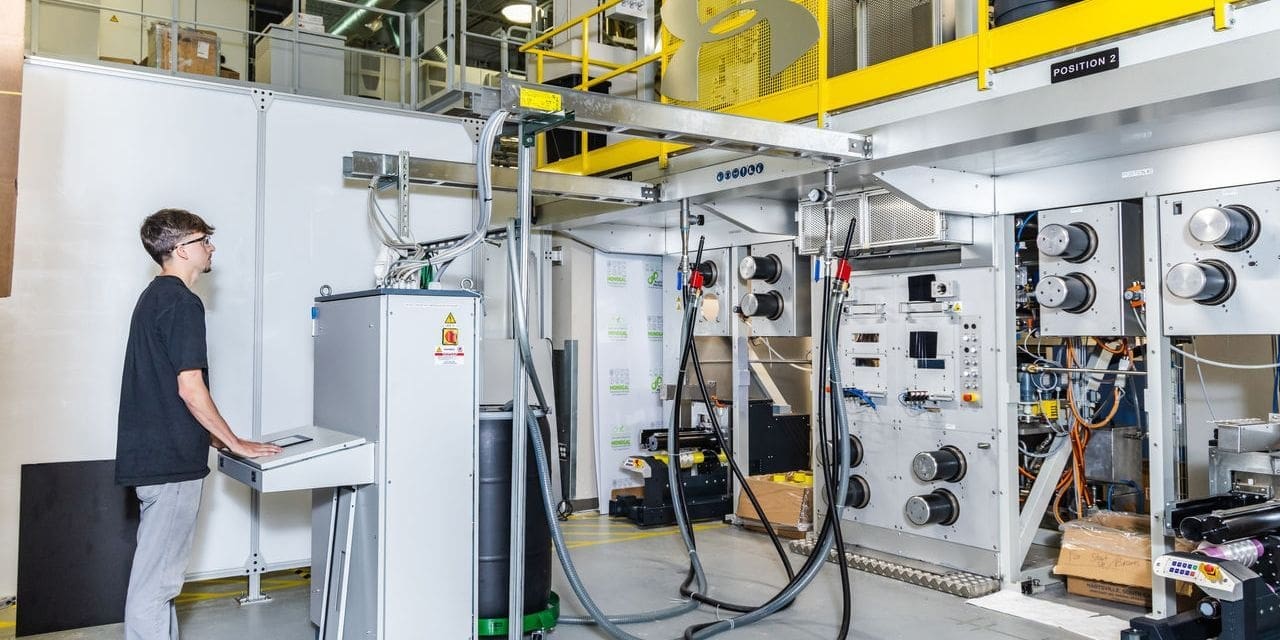Under Armour Inc. today announced the development of a new testing methodology to combat fibre shedding at its source and support progress towards the company’s sustainability goal of making 75 percent of fabrics in its products from low-shed materials by 2030. Under Armour’s innovative test method simplifies the process of accurately measuring a fabric’s proclivity to shed. To support the creation of lower-shed products, the company has begun using the method to test materials and quantify their shed rate early during product development to target high-shed materials for redevelopment or discontinuation before they enter the market. Under Armour is also using the method to screen out new textile candidates with high shed rates before they enter product development streams.
As a fabric Textiles naturally shed fibres as they are manufactured, worn, and cleaned. These fibre fragments, also known as microplastics, have the potential to enter the atmosphere, waterways, and food chains. When inhaled through the air or ingested through food and drinking water in high concentrations, they are thought to pollute the environment, disrupt ecosystems, and pose health risks to humans and animals. According to a study commissioned by the World Wide Fund for Nature (WWF), the average person ingests as much as five grammes of plastic a week — the equivalent weight of a credit card — from fibre shedding that naturally occurs from textiles and other sources of plastic.
Supporting innovations that reduce fibre shedding over time is a priority focus of Under Armour’s sustainability programme. Textiles naturally shed fibres as they are manufactured, worn, and cleaned. These fibre fragments, also known as microplastics, have the potential to enter the atmosphere, waterways, and food chains. When inhaled through the air or ingested through food and drinking water in high concentrations, they are thought to pollute the environment, disrupt ecosystems, and pose health risks to humans and animals. According to a study commissioned by the World Wide Fund for Nature (WWF), the average person ingests as much as five grammes of plastic a week — the equivalent weight of a credit card — from fibre shedding that naturally occurs from textiles and other sources of plastic.
Supporting innovations that reduce fibre shedding over time is a priority focus of Under Armour’s sustainability programme. fabric’s property, Under Armour is looking into new ways to redevelop high-shed fabrics, such as mechanical finishes and yarn formations that can support less shedding. High-shed fabrics, which are often appealing to consumers because of their softness, are also less durable than low-shed fabrics. Given this, the company’s new test method will help to inform efforts to develop products that have the best balance of comfort and durability.
“We are committed to addressing sustainability issues like fibre shedding holistically, and we have already begun to use our methodology to produce more sustainable products for athletes that feature Under Armour’s signature high-performance attributes,” said Kyle Blakely, Under Armour’s senior vice president of Innovation. “We expect to see products that have been improved through this process on the market as soon as possible.” As early as 2024, we hope to inspire athletes with performance-driven innovations that embody our core value of ‘Act Sustainably’ as we work towards our 2030 goal.”
“Synthetic microfiber pollution represents a largely invisible, global conservation threat that is only getting worse,” Aliya Rubinstein, project director for the Oceans Program at the Nature Conservancy in California, added. The fashion industry has an opportunity to act now and advance real solutions that address their contribution to the plastics crisis in a measurable way. Under Armour’s investment in efforts to understand and reduce fibre shedding is a critical component of a larger set of interventions that are urgently required for us to collectively move the industry in the right direction.”
The methodology developed by Under Armour supplements existing fiber-shed testing approaches. As early as 2024, we hope to inspire athletes with performance-driven innovations that embody our core value of ‘Act Sustainably’ as we work towards our 2030 goal.”
“Synthetic microfiber pollution represents a largely invisible, global conservation threat that is only getting worse,” Aliya Rubinstein, project director for the Oceans Program at the Nature Conservancy in California, added. The fashion industry has an opportunity to act now and advance real solutions that address their contribution to the plastics crisis in a measurable way. Under Armour’s investment in efforts to understand and reduce fibre shedding is a critical component of a larger set of interventions that are urgently required for us to collectively move the industry in the right direction.”
The methodology developed by Under Armour supplements existing fiber-shed testing approaches. to evaluate and address the microfiber issue.”Under Armour is exploring ways to make its testing methodology available to its industry and expects to explore how the methodology could be utilised by other industries.

